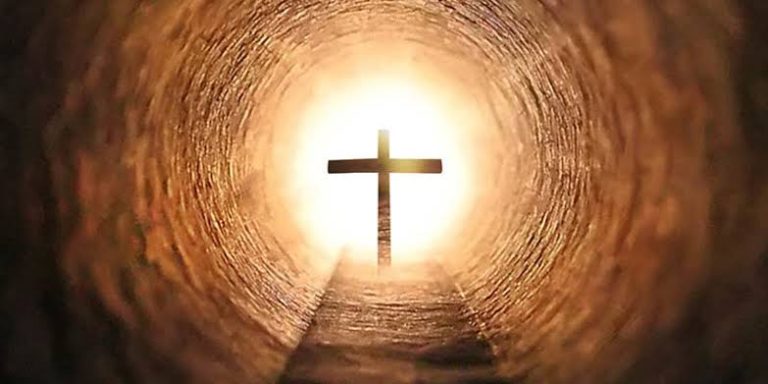CHRISTMAS AND THE THREE WISE MEN: FACTUAL OR NOT?
BY Sanusi Olawale ibn Abdulwasiu Growing up was fun and adventurous. We heard a lot things we…

BY
Sanusi Olawale ibn Abdulwasiu
Growing up was fun and adventurous. We heard a lot things we never had chance to question. From stories of Tortoise to that of legends who are no more. We read and heard that Tortoise was very clever and dubious. Only for us to grow and found out the opposite; tortoise cannot talk let alone deceiving other animals.
Similarly, Christmas used to come with lots of stories. Some real, others concocted.
The only genuine parts of Christmas is that the birth of Jesus is actually true. Jesus was given birth to. But definitely not December. This is a verifiable fact anytime.
Meanwhile, in stories as told and acted out in scripts; men in glittering velvet robes and fake beards on live camels . Bearing gifts, they travelled far , following yonder stars all the way from the east.
I’m speaking, of course, of the Magi. Or is it wise men? Wait, kings? Sorcerers?
Everyone knows the legend of the three wise men’s visit to Bethlehem as retold every Christmas. Three Wise Men followed a star to find baby Jesus, wrapped in swaddling clothes and lying in a manger. They presented him with gifts of gold, frankincense, and myrrh. This story has lived on over the centuries as a key part of the birth of Jesus. But is it truly factual?
The story also has the number “three” attached to the wise men. Perhaps, they concluded the number from the gifts given. But what if the golds were 12, frankincense were 15 and myrrh were 13, would the wise men have been called 40? They presented three categories of gifts, it doesn’t mean they were three. In Eastern Christianity , especially the Syriac churches, the Magi is meant to be 12.
In movies and Bible story books, these wise men are seen on camels. Did Matthew say the came on camels? Le us continue!
Matthew, an anonymous writer of the gospel according to Matthew solely penned the story of the wise men from the east. According to him, they had travelled that far only to worship the baby Jesus and honour him with gifts. Luke, Mark and John finds nothing recordable about this important event. 2 Corinthians 13:1 says “Every matter must be established by the testimony of two or three witnesses.”
Then shall Matthew’s account stand valid?
Perhaps if Luke the historian had written about them in his “Christmas” account, we might have had precise details; at least two testimonies better than one. But Matthew’s account is hazy, covered in mystery.
Matthew 2:1-12:
“In the time of King Herod , after Jesus was born in Bethlehem of Judea, wise men from the East came to Jerusalem, asking, “Where is the child who has been born king of the Jews? For we observed his star at its rising, and have come to pay him homage.” When King Herod heard this, he was frightened and all Jerusalem with him; and calling together all the chief priests and scribes of the people, he inquired of them where the Messiah was to be born. They told him, “In Bethlehem of Judea; for so it has been written by the prophet: ‘And you, Bethlehem, in the land of Judah, are by no means least among the rulers of Judah; for from you shall come a ruler who is to shepherd my people Israel.’ ” Then Herod secretly called for the wise men and learned from them the exact time when the star had appeared. Then he sent them to Bethlehem, saying, “Go and search diligently for the child; and when you have found him, bring me word so that I may also go and pay him homage.” When they had heard the king, they set out; and there, ahead of them, went the star that they had seen at its rising, until it stopped over the place where the child was. When they saw that the star had stopped, they were overwhelmed with joy. On entering the house, they saw the child with Mary his mother; and they knelt down and paid him homage. Then, opening their treasure chests, they offered him gifts of gold, frankincense, and myrrh. And having been warned in a dream not to return to Herod, they left for their own country by another path.”
Intrigue surrounds these festooned foreigners. Where did they come from? With a wink Matthew writes, “the East.” Indeed, his description is so utterly “specific” that church traditions in dozens of countries claim to be their country of origin. And who were they? Technically speaking, Matthew calls them magi —but what are magi? Are they kings? Wise men? Sorcerers? Astrologers?
Christians have been having serious headache to break down Matthew’s story for centuries, or let me say millennia. As early as A.D. 200, Tertullian was laying out arguments that the Magi, while astrologers by trade, were considered kings. Surprisingly, John Calvin felt strongly about anyone who would label them “three kings”: “Beyond all doubt, they have been stupefied by a righteous judgment of God, that all might laugh at [their] gross ignorance.”
So what is Magi?
The Magi are popularly referred to as wise men and kings. The word magi is the plural of Latin magus , borrowed from Greek magos , as used in the original Greek text of the Gospel of Matthew (in the plural: magoi ).
Greek magos itself is derived from Old Persian maguŝ from the Avestan magâunô , i.e., the religious caste into which Zoroaster was born. The term refers to the Persian priestly caste of Zoroastrianism . As part of their religion, these priests paid particular attention to the stars and gained an international reputation for astrology , which was at that time highly regarded as a science. Their religious practices and use of astrology caused derivatives of the term Magi to be applied to the occult in general and led to the English term magic , although Zoroastrianism was in fact strongly opposed to sorcery . The King James Version translates the term as wise men; the same translation is applied to the wise men led by Daniel of earlier Hebrew Scriptures ( Daniel 2:48 ).
“Then the king placed Daniel in a high position and lavished many gifts on him. He made him ruler over the entire province of Babylon and placed him in charge of all its wise men.”
The fraud of the church and Christians has also made the wise men be kings. The identification of the Magi as kings is linked to Old Testament prophecies that describe the Messiah being worshipped by kings in Isaiah 60:3 , Psalm 68:29 , and Psalm 72:10 , which reads,
“Yea, all kings shall fall down before him: all nations serve him.”
Twisting textual evidence to suit their desire is all they usually do. Early readers reinterpreted Matthew in light of these prophecies and elevated the Magi to kings. By AD 500 all commentators used the prevalent tradition that the three were kings. But reading the text in Matthew 2:1, do they sound like kings of any sort? Three kings left there throne to run after one star all the way to Bethlehem. Amazingly surprising, isn’t it?
Since Matthew vaguely mentioned East as the original habitat of the wise men, Christianity find it hard to tell where in the east they come from.
In the Western Christian church, they have all been regarded as saints and are commonly known as: Melchior a Persian scholar; Gaspar; and Balthazar a Babylonian scholar.
In contrast, many Syrian Christians name the Magi Larvandad , Gushnasaph , and
Hormisdas . That’s not the end, the Eastern churches, Ethiopian Christianity , says no, they have Hor , Karsudan , and Basanater , while the Armenian Catholics have Kagpha , Badadakharida and Badadilma. Many Chinese Christians believe that one of the magi came from China.
So who is right among the churches? Where did these wise men came from?
No where! A mere concoction. A story stolen from history.
Sebastian Brock, a historian of Christianity, has said: “It was no doubt among converts from Zoroastrianism that… certain legends were developed around the Magi of the Gospels”.
-(Brock, Sebastian (1982). “Christians in the Sasanian Empire: A Case of Divided Loyalties”. In Mews, Stuart (ed.). Religion and National Identity . Studies in Church History, 18. Oxford: Blackwell. pp. 1–19.)
Anders Hultgard also concluded that the Gospel story of the Magi was influenced by an Iranian legend concerning magi and a star, which was connected with Persian beliefs in the rise of a star predicting the birth of a ruler and with myths describing the manifestation of a divine figure in fire and light.
-(Hultgård, Anders (1998). “The Magi and the Star—the Persian Background in Texts and Iconography”. In Schalk, Peter; Stausberg, Michael (eds.). ‘Being Religious and Living through the Eyes’: Studies in Religious Iconography and Iconology: A Celebratory Publication in Honour of Professor Jan Bergman. Acta Universitatis Upsaliensis: Historia Religionum, 14. Uppsala, Almqvist & Wiksell International. pp. 215–25.)
Meanwhile, in 2010 an ancient text called the “Revelation of the Magi,” was discovered and tells a very different version of the Three Wise Men’s journey to Bethlehem.
Brent Landau, an expert in ancient Biblical languages and literature, who teaches at the College of Liberal Arts, University of Texas at Austin translated the text from Syriac and published it in his book, “The Revelations of the Magi: The Lost Tale of the Wise Men’s Journey to Bethlehem.”
In this version, Landau said the “star child” spoke to the Magi.
“Christ tells them, ‘This is one of many occasions on which I have appeared to the peoples of the world.”
This revelation of Landau deal a great blow on the account of Matthew. Even though the author of the said book that was discovered is unknown, it still doesn’t tally with the one anonymous Matthew penned too. No wonder Luke and Mark didn’t say a word about the Magi. It’s just a tale, a fable, concocted to make Jesus greater than who he was.
Do we still need any prophet to interpret that the biblical Magi is nothing but a myth, legend and a fabrication to make Jesus so special?



